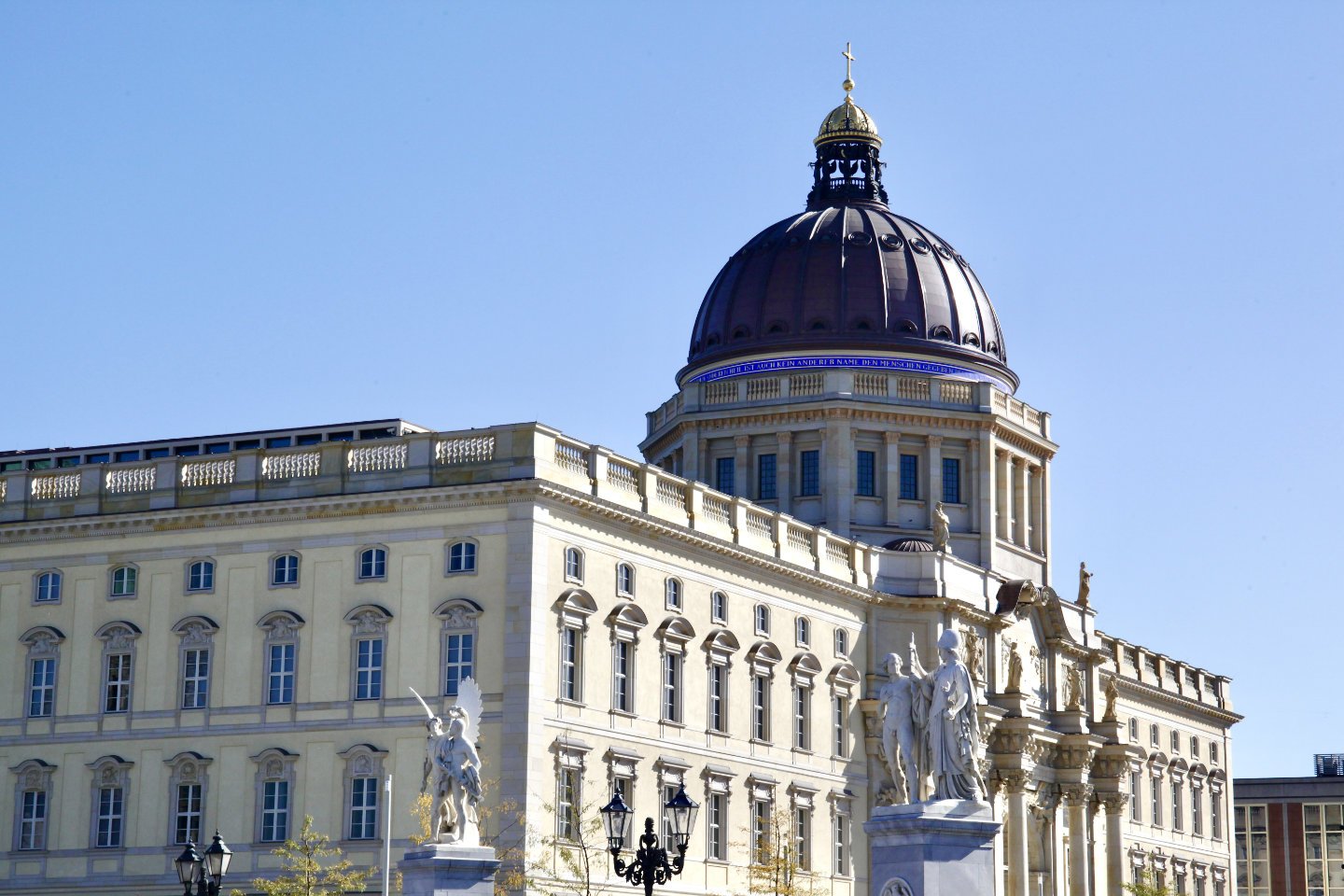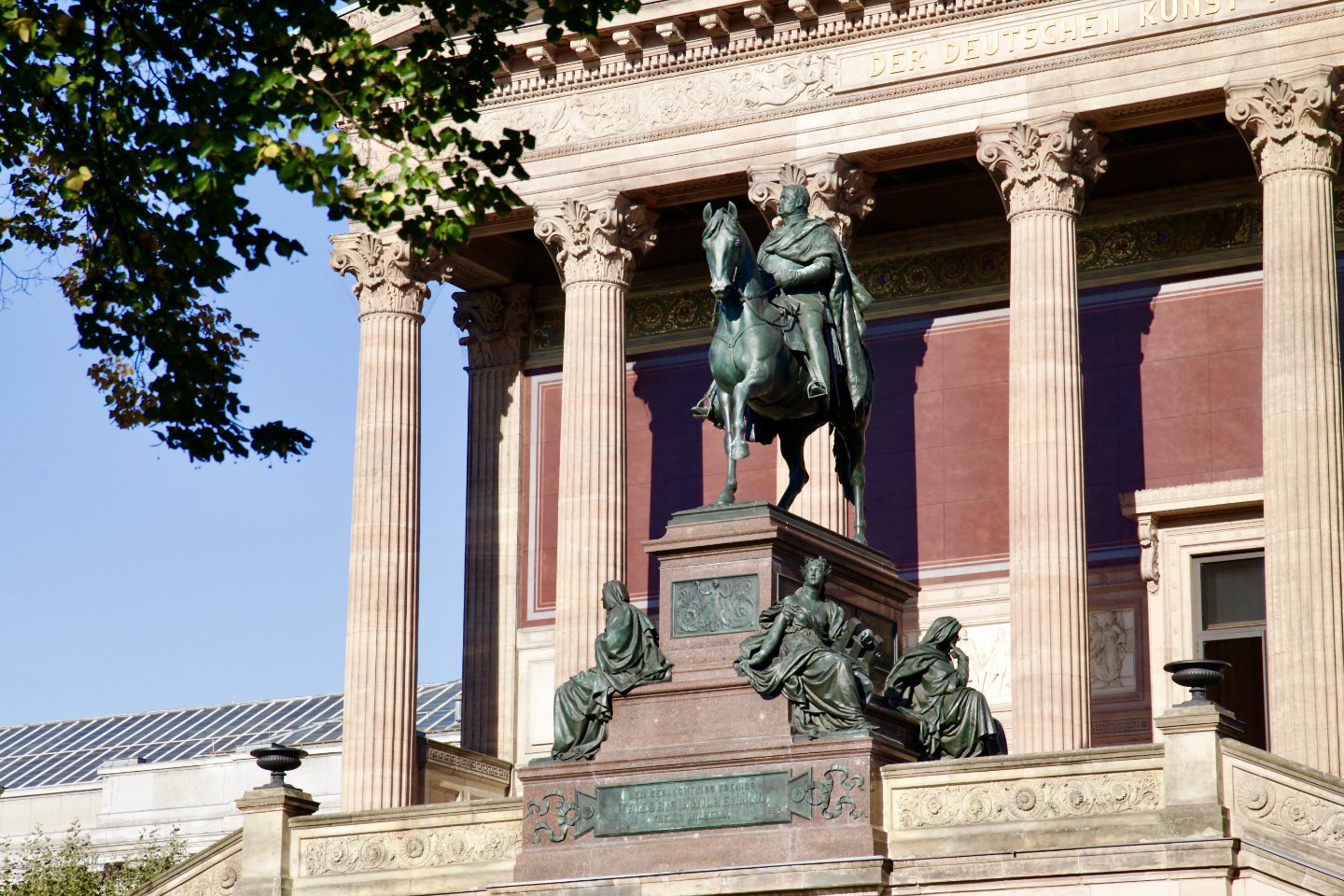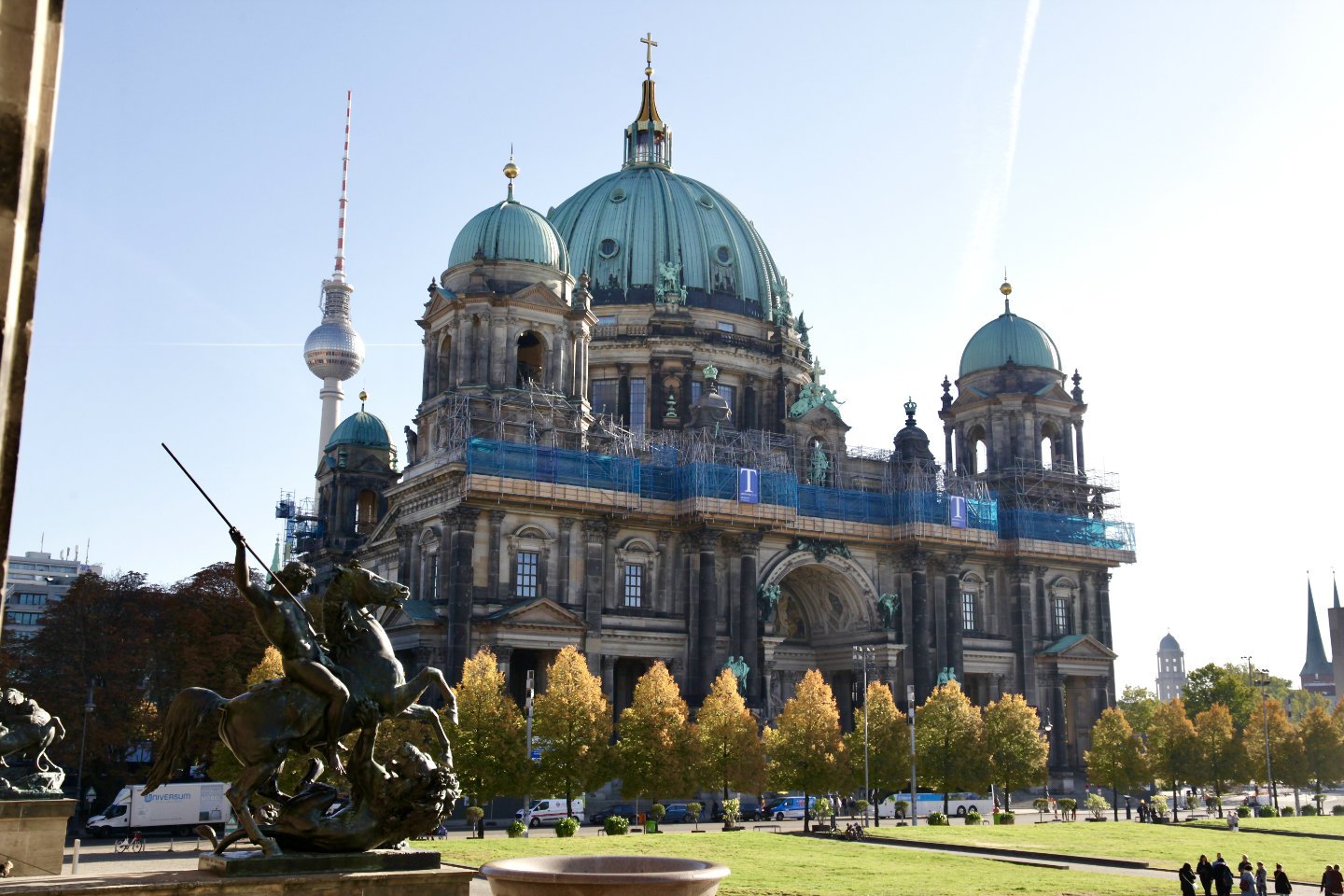Whitlam’s Self-Guided Berlin Walks: Royal Berlin UNESCO World Heritage Sites
The Berliner Dom on the banks of the Spree
Want to see one of the top Berlin UNESCO World Heritage Sites? In recent years many of Berlin’s oldest buildings have been fixed up or built entirely anew. Take this free self-guided walk through Royal Berlin to discover the prettiest parts of Berlin, including the top Berlin UNESCO World Heritage Site, Museum Island.
This 60-minute walk takes you over the world-famous Museum Island, past the stunning Berlin Cathedral, to the magnificent State Opera House and finishes at the brand-new Prussian City Palace. Visiting the roof of the palace is free!
Follow this tour on a custom Google map
I’ve made a custom Google Map for you so that you can follow the walk on your phone as you go. There are even some photos and information in there so you know what you’re looking at while you’re discovering Museum Island, the top Berlin UNESCO World Heritage Site.
What do I see on the walk?
On the self-guided Royal Berlin UNESCO World Heritage Sites walk you will see:
Bode Museum
Old National Gallery (Alte Nationalgalerie)
New Museum (Neues Museum)
Berlin Cathedral (Berliner Dom)
Old Museum (Altes Museum) & the Pleasure Garden (Lustgarten)
James Simon Gallery
Memorial to the Victims of War & Tyranny
Bebelplatz - Berlin State Opera & Book Burning Memorial
St. Hedwig’s Cathedral
Crown Prince’s Palace (Kronprinzenpalais) & The German History Museum (Deutsches Historisches Museum, DHM)
The City Palace (Stadtschloss)
The Bode Museum on Museum Island over the river Spree
1. The Bode Museum
Let’s kick off our walk through Royal Berlin’s UNESCO World Heritage Sites with one of Berlin’s grandest buildings! The Bode Museum is a stunning building on the southern tip of Museum Island. I’ve started my walk here on a rickety, ugly bridge because it’s home to one of Berlin’s best views. The grand 19th-Century Museum Island in front, and the space-age TV Tower over to the left. Let’s walk through the park (to the left as you look at the Bode Museum) and head over to the UNESCO World-Heritage Museum Island.
The Bode Museum is home to a lot of medals, coins, and some truly terrifying religious art! Above all else for me, the stunning architecture is the highlight of the show. Pure Prussian pomp - really makes you imagine the Berlin that could have been without all the mess that was the 20th Century.
King Frederick William IV of Prussia
2. The Old National Gallery
My personal favourite building on Museum Island! The old national gallery was commissioned by King Friedrich Wilhelm IV (you’re getting your Friedrichs and Wilhelms mixed up by now, huh?) to share his art collection with the people. The King died before the museum was completed. You can find the works of the German Romantics in the museum.
3. The New Museum
The real star of the show. I would argue that this is the best museum in Berlin. The New Museum hosts Berlin’s Egyptian collection. While a lot of the artefacts were brought here legally, many were also stolen or taken under duplicitous circumstances. The most famous artifact inside is the bust of Nefertiti, an image of Tutankhamun’s mother. However, for many people, it’s the architecture of the building that steals the show. The New Museum was very heavily damaged during WWII. It wasn’t reopened until 2009! The redesigned museum incorporates damage from World War Two into the new building. Have a close look as you walk by and you’ll notice missing plaster and plenty of bullet holes, shrapnel damage, etc.
In fact, there were a lot of close eyes on the construction project, as it’s very easy to lose UNESCO World Heritage status like Dresden did!
My favourite view of the Berliner Dom is from the Old Museum
4. The Berliner Dom
The Berliner Dom is intentionally built to look older than it really is. It was actually finished at the beginning of the 20th Century, back when Germany was still an empire. The emperor, Kaiser Wilhelm II, had the cathedral built ‘to rival those in London and in Rome, to make Berlin a world city that would rival Paris and New York.
The Cathedral wasn’t fully repaired after World War Two until 2004!
The oldest museum on Museum Island is called The Old Museum
5. The Old Museum & the Lustgarten
The oldest museum on the island. The Old Museum houses a large collection of Roman artifacts. It was opened in 1830 under the rule of King Friedrich-Wilhelm III. It was built in the Neoclassical style to make Berlin look old, wealthy, cultured, and important.
The garden in front of the old museum was once used by Napoleon to drill his armies. In January 1933 it hosted Berlin’s largest protest up to that time as Berliners came out in their hundreds of thousands to protest the rise to power of Hitler and the Nazi party.
6. The James Simon Gallery
The almost-newest addition to Berlin’s UNESCO World Heritage Museum Island. This is essentially an over-the-top ticket office. Hot tip: you can buy a multi-museum pass here for around €20 that will give you access to all five of Museum Island’s museums for one day.
So, who was James Simon? A Jewish businessman with a passion for education, James Simon was also a great collector who displayed (and later donated) many artifacts in Berlin’s museums.


7. The Memorial to the Victims of War & Tyranny
This small neoclassical building probably doesn’t stand out at first. It’s about 200 years old and was originally built as a guardhouse for the palace and a memorial for the Napoleonic wars. Over the years the appearance and meaning of the memorial changed for all of Germany’s different political regimes: Weimar Berlin, The Nazis, the Communists (we’re in East Berlin), and now in the present day as well. The current memorial represents the futility of war: the statue inside is designed by an artist from Berlin, Käthe Kollwitz, who lost family members in both world wars. It depicts a mother holding her dying son.
“Where one starts by burning books, one ends by burning people” Heinrich Heine, 1820
8. Bebelplatz - State Opera & Nazi Book Burning Memorial
This beautiful square features many important royal buildings. The state library (now part of the Humboldt University) is on the Western side, but the large pink building that dominates the square is Berlin’s State Opera (Staatsoper). Originally opened in 1743, the State Opera was opened under the Prussian King Frederick the Great. The idea was to share art & culture with the people of Prussia.
In the centre of the square, you will find a window into an empty library built in 1995. This is a memorial for the first Nazi book burning, held in this square in May 1933.
9. St. Hedwig’s Cathedral
A Catholic church in the middle of Protestant Prussia? What’s happening here? When Frederick the Great became King he snatched the territory of Silesia from the Austrians, and as a result, Catholics became part of Prussia. Rather than forcing them to convert, the King built the Catholics this church to welcome them to his Kingdom.
10. The Crown Prince’s Palace & the German History Museum
The Crown Prince’s palace is where the governments of East and West Germany formally agreed to reunite in the Summer of 1990. There’s a small plaque outside the front. Try to find it!
On the other side of the street you can see one of the oldest buildings in Berlin, the German History Museum. When it was finished in 1705 it was the Prussian Armoury. The German History Museum is one of the country’s finest museums, taking you through hundreds of years of German history.



11. The Prussian Berlin City Palace
There has been a Prussian Berlin City Palace (Stadtschloss) in some form here since the 15th Century. The current palace dates all the way back to distant year of 2021 (really!) and it’s not actually a palace at all. 3 of the building’s 4 facades are reconstructions of the original Prussian palace that was demolished after World War Two and replaced with East Germany’s parliament building, The Palace of the Republic.
You can visit the courtyards of the palace for free, there’s a museum about Asian art inside, and you can even head up to the roof for free to get stunning views over Museum Island and the Berlin Cathedral.
12. Please leave me a Google Review
That’s it! Did you enjoy your free self-guided walk? Please leave a five-star Google Review to help me grow my small business and sell my private tours. Thank you!



















